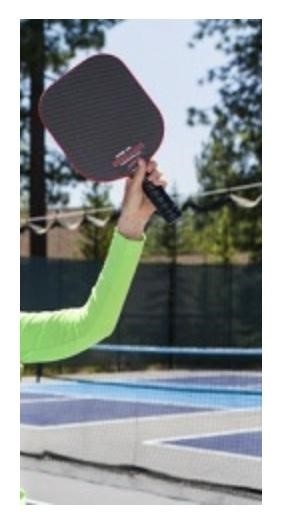Referee News

Here is a good example of the importance of keeping up with the Rules. The following was a Q&A I addressed in November 2019:
Question:
In a recent match, my partner was the receiver. I needed to talk to her so I raised my paddle before the score was called. The referee disregarded my signal, called the score and the opposing team served. My partner was caught off-guard and we lost the point. I objected, saying I had raised my paddle to signify we were not ready. The referee disallowed my protest. Is that correct?

Answer:
Yes, the referee was correct. Rule 4.C.1 states, “The SERVER and RECEIVER must use one of the following signals to indicate that he or she is not ready to serve or receive the serve, respectively: 1) raising the paddle above his or her head, 2) raising the non-paddle hand above his or her head, or 3) completely turning his or her back to the server." These signals are not valid if used by the server's or receiver's partner.
Here is a perfect example of why it is important to keep up with the rules, and to be on top of rule changes when they are introduced in January of each year. (At least it appears that USAPA will be updating the rules at the beginning of each year, as they have done this for the past few years).
With the recent rule changes (15 January 2020) those responses are now incorrect. Let’s discuss these situations…
New Answer:
Previously, only the receiver, or the server were able to indicate not ready to the referee. After 15 January, 2020 all four players may use the appropriate signals
(Rule 4.C.1) to indicate they are not ready. However, it is important that you understand that Referees have discretion as to when they call the score. Rule (4.D.) states that “the score shall be called after the server and receiver are (or should be) in position and all players are (or should be) ready to play”. If you have a bee buzzing around you, or a contact falling out, the referee should give you sufficient time to rectify those situations, (within reason). If however, you are just trying to slow the pace of the game, the referee may have a word with you and ask that you move more quickly to your position, or they may deem that you “should be” in position and call the score.
Advice:
Move quickly to your position, especially if you are the receiving team! Referees like to allow the serving team the ability to set the pace of the game.
Rule 4.C.1 has also been slightly changed… One of the following signals must be used to indicate “not ready”: 1) raising the paddle above the head, 2) raising the non-paddle hand above the head, 3) completely turning their back to the net. (Not the server, as previously stated, because it is hard for the server to turn their back to themselves)
You also need to know… with this rule change, once the server or referee has started to call the score, any subsequent showing of a “not ready” signal will neither be honored nor penalized. “Not ready” signals given after the start of the score calling are to be ignored unless there is a valid hindrance, e.g. ball on court. This change has removed the penalty for showing a “not ready” signal after the score was called.
Alan Thomson, Referee-in-Chief
USAPA Tournament rated 4.0
USAPA Certified Referee since 2017
Re-certified in 2020 for further 3 years
USPA/PCO Registered Referee Trainer
IPTPA Level 1 Trainer
Head Referee for PBBC since 2018



